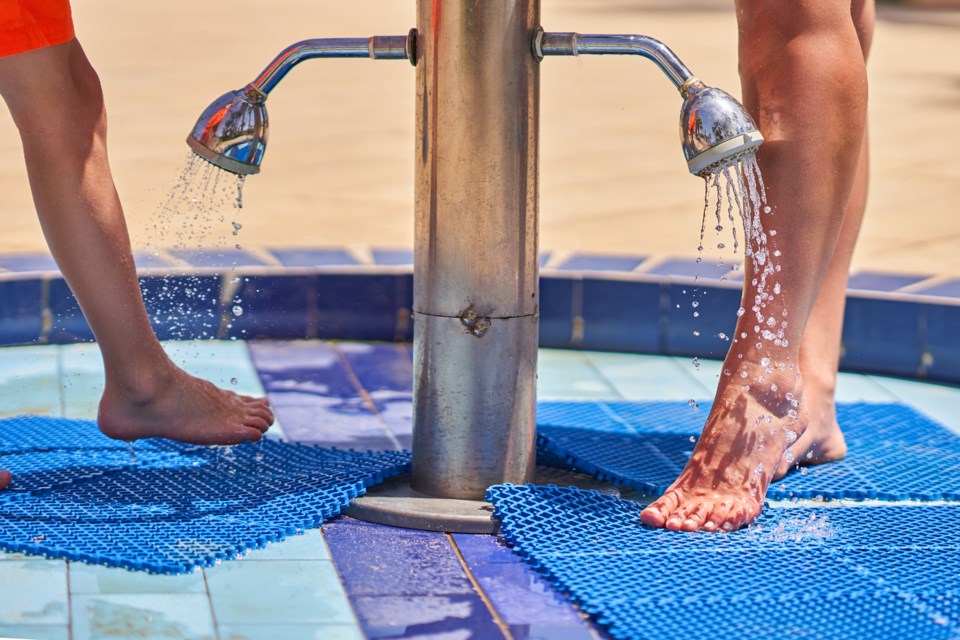After Paul Hecht and his family waded into the waters of Alta Lake at Whistler’s Rainbow Park the weekend before Canada Day, they left with more than memories of an afternoon swim—they came home with swimmer’s itch.
"It's beautiful and the lake is wonderful, except for its dangers… My kids enjoy it. It's great for kids and adults. It's accessible by bike or walking or even transit and car, and it's got beautiful views of the mountains. It's one of the best places in Canada," Hecht said.
But the newly renovated park's showers weren’t working—a problem Hecht had noticed the day prior on a bike ride, when tape blocked off the facilities.
“I figured, well, they would remedy this at some point. And then we went the next day,” he said.
As the sun beat down, many others were swimming in the lake. When Hecht asked a grounds crew worker for information about the showers, they couldn’t provide any.
“So my wife and I sort of deliberated and determined, well, they wouldn't be so irresponsible, after spending all this money, to let all these people be exposed to this without remedy. There was no signage by the showers. There was nothing by the public toilets.”
Hecht also noted that the hot, prolonged weather often associated with swimmer’s itch hadn’t occurred yet—another factor in his assumption conditions were safe.
“I put my son in a little blow-up raft, and I clipped it to my paddle board and towed him across the whole lake. He actually didn't even swim, he was just sort of bobbing in the water from the raft. And that turned out to be disastrous," he said.
“He woke up in the middle of the night in agony, and we were really dismayed to see his entire backside just covered, there must have been 50 welts.”
Hecht began to show symptoms himself about 24 hours later, and his wife developed a milder case.
While the Resort Municipality of Whistler (RMOW) does post signage at the park advising swimmers to rinse off after being in the water, the showers were not functioning.
“It says, ‘Please wash thoroughly after swimming,’ yeah, which I felt kind of humorous, because there was no way to wash thoroughly,” Hecht said.
The RMOW confirmed signage warning of swimmer’s itch is posted at the beach’s entrance, but said in an email there are no plans to install additional notices at this time.
Staff discovered the broken showers in mid-May, when they attempted to turn on the water supply. Initially, it was believed the concrete slab had shifted over the winter, crushing the water lines and damaging the valves.
“As it turns out, the lines were not crushed, coring was not necessary, and the repair went better than expected,” a municipal communications official wrote.
The showers were repaired on July 4 and 7 and are expected to remain functional for the rest of the summer.
The repairs cost roughly $500, and the showers originally cost $13,451 to install.
“We had other higher priorities in May and June to get our parks ready for summer, including installing new docks at Lakeside and Wayside parks, which had specific permit timelines attached,” the official added.
According to HealthLink BC, swimmer’s itch is an allergic reaction to tiny parasites called schistosomes that spend part of their life cycle in snails and waterfowl, and tend to concentrate in shallow, warm water near the shore. The larvae can burrow into human skin but die shortly after, triggering an itchy rash that appears within minutes to days of exposure and usually clears within about a week. Preventing it involves avoiding shallow, weed-filled areas, towelling off or showering immediately after swimming, and applying a greasy barrier—such as waterproof sunscreen or baby oil—to inhibit parasite penetration.
For added protection, Parks Canada recommends steering clear of beaches where swimmer’s itch has been reported, rinsing thoroughly in fresh water after exiting the lake, and drying with a towel—especially for children, who are more susceptible according to HealthLink BC.
If a rash occurs, over‑the‑counter remedies such as antihistamines, hydrocortisone creams, oatmeal or baking‑soda baths, and soothing lotions can help ease symptoms. Repeated exposures may heighten sensitivity, making prevention through awareness and prompt post-swim cleaning crucial.




